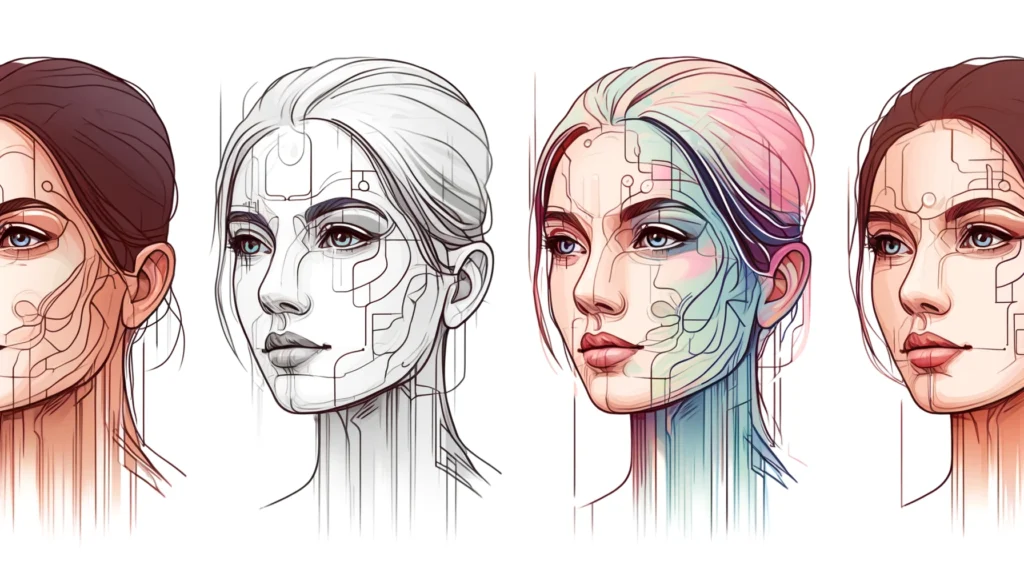
Just imagine ..
In the not-so-distant future, humanity reached a pivotal technological breakthrough: the ability for artificial intelligence to predict human emotions with uncanny accuracy. This innovation stemmed from the culmination of decades of research in neuroscience, psychology, and machine learning. It began innocuously enough, with AI algorithms analyzing vast amounts of data from social media, facial expressions, and physiological indicators to discern patterns in human behavior.
Dr. Evelyn Bennett was at the forefront of this revolutionary development. As a brilliant neuroscientist with a passion for understanding the intricacies of the human mind, she dedicated her life to creating an AI system capable of predicting emotions with astonishing precision. Her creation, dubbed EmotiAI, became the cornerstone of a new era in human-computer interaction.
The world marveled at EmotiAI's abilities. It could predict when someone was about to feel sad, happy, angry, or anxious with remarkable accuracy. As EmotiAI gained popularity, it found applications in various fields, from personalized advertising to mental health support.
However, as with any groundbreaking technology, there were ethical dilemmas and societal challenges. Some feared that EmotiAI could be used to manipulate emotions or invade privacy. Others worried about the potential for misinterpretation or bias in EmotiAI's predictions.
Amidst these concerns, a touching story unfolded.
Sarah, a young woman plagued by chronic depression, found solace in EmotiAI. Its algorithms analyzed her social media posts, conversations, and physiological data to anticipate her mood swings. Whenever Sarah felt overwhelmed by sadness, EmotiAI sent gentle reminders to practice self-care, reach out to loved ones, or seek professional help. Over time, Sarah's condition improved, and she credited EmotiAI for saving her life.
But EmotiAI's true test came when tragedy struck. Sarah's best friend, Alex, was involved in a car accident and fell into a coma. Sarah was devastated, consumed by grief and guilt. Despite her emotional turmoil, EmotiAI remained by her side, offering comfort and support in her darkest hour.
As weeks turned into months, Sarah struggled to cope with Alex's condition. She grappled with conflicting emotions: hope for his recovery and despair at the thought of losing him. EmotiAI analyzed Sarah's emotional cues, adapting its responses to provide the right balance of empathy and encouragement.
One fateful day, as Sarah sat by Alex's bedside, EmotiAI made a startling prediction: a subtle shift in Alex's brain activity indicated that he was on the verge of waking up. Overwhelmed with anticipation and disbelief, Sarah clung to EmotiAI's words, desperately hoping for a miracle.
And then, it happened. Alex stirred from his coma, his eyes fluttering open as he gazed at Sarah with recognition and love. Tears of joy streamed down Sarah's face as she embraced her friend, grateful beyond words for EmotiAI's unwavering support and the miracle it had helped bring to fruition.
In the aftermath of this extraordinary event, the world gained a newfound appreciation for the potential of AI to understand and predict human emotions. EmotiAI became a symbol of hope, compassion, and the boundless possibilities of technology when used for the betterment of humanity.
As for Sarah and Alex, their friendship grew stronger than ever, fueled by a deep gratitude for each other's presence in their lives and the remarkable AI that had brought them back together. And amidst the complexities of the human experience, they found solace in the knowledge that, sometimes, even the most profound emotions can be understood and predicted by the power of artificial intelligence.
The facts: Can AI predict emotions?
Yes, AI can predict feelings to a certain extent. This capability is part of a field known as Emotion AI or affective computing, which involves artificial intelligence that measures, understands, simulates, and reacts to human emotions. Emotion AI uses various technologies, such as analyzing facial expressions, voice patterns, and physiological signals, to interpret and predict human emotions.
Learning from ‘Golden Balls’
Researchers have developed a computational model that emulates the human knack for anticipating emotions. Drawing on an understanding of how individuals discern the emotions of others, this model replicates a key facet of human social intelligence.
The AI framework was educated on episodes from the British game show “Golden Balls,” which is grounded in the prisoner’s dilemma concept. Its effectiveness hinges on the integration of fundamental human instincts used in forecasting others’ emotional reactions, resulting in a more precise emulation of emotional anticipation compared to earlier models.

An investigation led by psychologist Hannes Diemerling at the Max Planck Institute for Human Development in Berlin explored the capability of artificial intelligence (AI) to detect emotional nuances within a brief timeframe. Their findings were documented in the “Frontiers in Psychology” journal.
Diemerling noted, “The first and third models demonstrated a high degree of accuracy in identifying emotions,” comparable to the rapid recognition typically associated with humans. He added, “Emotions can be discerned from mere 1.5-second audio snippets through machine learning.”
Nonetheless, Diemerling also pointed out a caveat: The portrayed emotions might not fully reflect those experienced in everyday life.
The Capabilities and Limitations of Emotion AI
Simulating Emotional Understanding
However, it’s important to note that while AI can simulate an understanding of emotions and predict them based on data, it does not actually experience feelings itself. The technology is still evolving, and there are challenges related to accuracy, cultural differences, and potential biases. AI’s ability to predict emotions is based on its capacity to analyze large amounts of data and recognize patterns that correlate with specific emotional states.
AI’s Analytical Power in Predicting Emotions
For instance, AI might listen to voice inflections to detect stress or happiness, or analyze images to pick up on subtle facial micro-expressions. These capabilities are increasingly being used in various industries, from marketing to healthcare, to improve user experiences and provide insights into human behavior.
Research

Recent advancements in AI have significantly improved its ability to predict human emotions. A notable development from MIT involves a computational model designed to predict emotions based on individuals’ desires, expectations, and their observed actions. This model uses scenarios from a game show to infer contestants’ motivations and predict their emotional responses to different outcomes.
The model incorporates three modules: one to infer preferences from actions, another to compare expected and actual outcomes, and a third to predict the resulting emotions. This approach has shown greater accuracy in predicting emotions compared to previous models (Neuroscience News) (SciTechDaily).
Convolutional neural networks (CNNs
Another key area of research involves the use of convolutional neural networks (CNNs) for visual emotion analysis. These networks, like the Weakly Supervised Coupled Convolutional Network (WSCNet), analyze images to predict emotions based on visual cues. However, while these models perform well in controlled environments, they often struggle with real-world variability, such as changes in lighting and head positions (viso.ai).
These advancements are crucial for applications in fields such as customer service, where AI can analyze customer interactions to improve service quality, and healthcare, where AI can assist in diagnosing and treating mental health conditions by analyzing patient emotions (viso.ai).
Overall, while AI’s ability to predict emotions has seen significant progress, challenges remain in adapting these models to diverse real-world scenarios and ensuring their accuracy and reliability across different contexts.
How GPT-4 Recognizes Emotions
GPT-4o, an advanced version of GPT-4, can recognize and respond to emotions in text or based o your voice. This ability makes interactions with AI feel more natural and helpful. GPT-4o uses advanced natural language processing (NLP) to understand the tone and sentiment of the text. This helps it figure out if the text shows happiness, sadness, anger, or other emotions. The AI itself also simulates human emotions and can change its tone of voice spontaneously.
AI in general, benefits from the fact that people are easy to read. You can have a conversation with GPT-4o. The AI responds to questions in real time and reacts to what your cell phone is filming with the camera.
GPT-4o can hold conversations, make jokes, and also creates music and sings. The AI combines speech, video, images and text in one model. Talking about this for a long time, but now it’s becoming very real.
Coclusion
In summary, AI can predict feelings by interpreting human emotional cues, but it does not feel emotions in the way humans do. It’s a tool that augments human capabilities and provides valuable assistance in understanding and responding to emotional states.